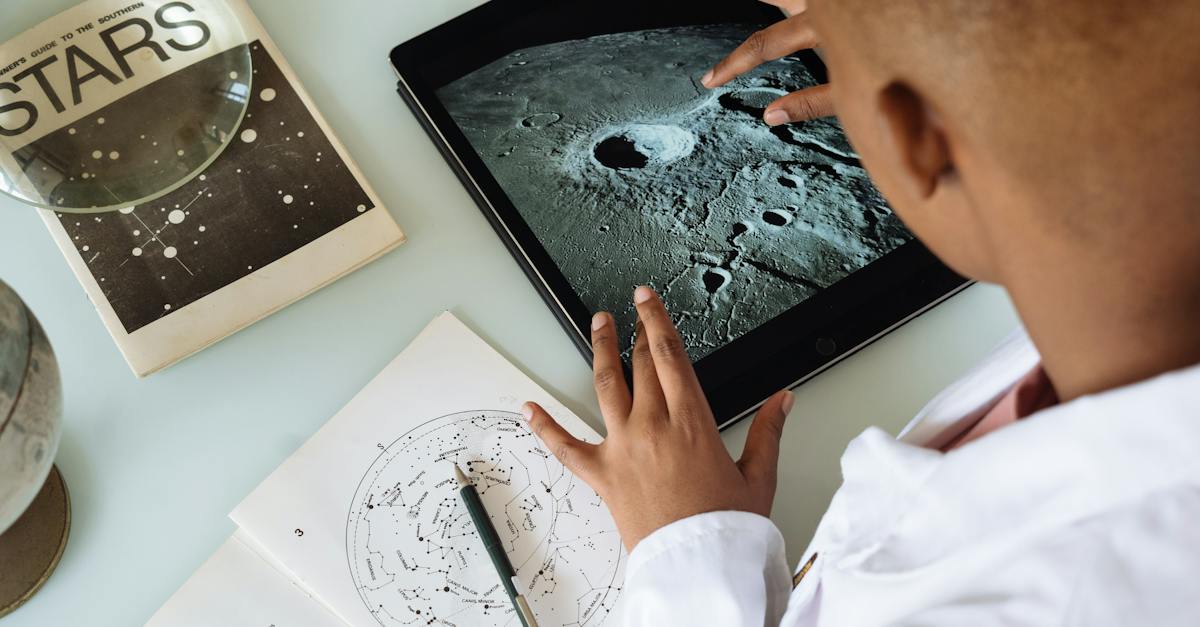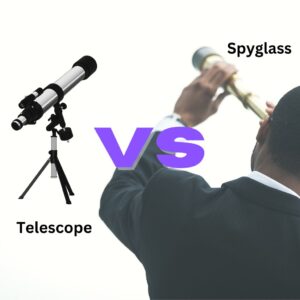This site contains affiliate links to products. I may receive a commission for purchases made through these links.
I’ve always believed that it’s never too early to start learning about the wonders of the universe. That’s why I’m thrilled to share my top picks for astronomy books for 5 year olds. These books are perfect for sparking that early interest in the stars, planets, and everything else out there in the cosmos.
Each book I’ll mention is not just informative, but also engaging and age-appropriate. They’re designed to make learning fun and ignite a lifelong passion for astronomy. So, whether your little one is a budding astronaut or a curious stargazer, these books are sure to captivate their imaginations.
Stay tuned as I dive into the world of children’s astronomy books. I’ll be highlighting the best of the best, ensuring your 5 year old gets a head start in exploring the infinite wonders of space.
Why Start Young?
Let’s dive into the rationale behind why it’s essential to introduce astronomy to children at a young age. Key observations and studies have indicated the significant advantages that early exposure to science fields such as astronomy can offer.
So what makes this such a boon for kids? Firstly, it paves the way for developing inquiry-based thinking. When children start questioning phenomena around them – like why the moon changes shape or why stars twinkle – they’re building important reasoning and critical thinking skills. These skills, in turn, form the foundation for later academic success.
Secondly, introducing astronomy early on instills a sense of perspective and curiosity. The infinite world of stars, planets, and galaxies stimulates children’s imaginations like nothing else. This not only reflects positively on their cognitive abilities but also enhances their creativity, ensuring they grow to be well-rounded individuals.
A world brimming with fascinating concepts, space is a thrilling realm that offers the scope for endless exploration. For example, the thematically organized ‘Galaxy Exploration’ series covers a broad array of topics, introducing complex concepts in a toddler-friendly manner. Such resources foster in children a passion for the subject, a passion that could very well translate into a rewarding career in the future.
Children, by nature, are curious and naturally inclined towards exploration and learning. By providing them with stimulating subject matters such as astronomy at an early age, you’re capitalizing on this innate curiosity.
Among the litany of astronomy books available on the market, it’s crucial to choose age-appropriate ones for your young learners. We’ve sifted through numerous publications to bring to you, dear reader, a list that offers the perfect blend of information and engagement. But more on these incredible resources in the following sections, where we delve deeper into some of the best titles and authors in children’s astronomy.
Top Picks for Astronomy Books for 5 Year Olds
Picking the right astronomy book for your inquisitive little one can feel like shooting for the moon, pun intended! But don’t worry; I’ve curated a list of top-notch books that’s perfect for any curious 5-year-old wannabe astronomer.
1. “There’s No Place Like Space: All About Our Solar System” by Tish Rabe
This delightful Dr. Seuss-inspired book makes learning about the solar system a fun, rhyming adventure. It’s filled with colorfully illustrated pages, simple explanations, and friendly characters to guide your child’s journey through space.
2. “The Darkest Dark” by Chris Hadfield
This book is authored by real-life astronaut Chris Hadfield. It mixes storytelling and science to encourage kids to dream big. The gripping tale revolves around Chris, who was once afraid of the dark but went on to become an astronaut. The book piques interest in space while also teaching kids to overcome their fears.
3. “The Space Adventure Professor Astro Cat’s Frontiers of Space” by Dominic Walliman and Ben Newman
Transform your little one into a space explorer with this engaging book. With its captivating illustrations and easy-to-understand facts, it’s easily one of the best astronomy books for 5-year-olds.
Each of these books paves the way for a mind-blowing journey through the cosmos. Using user-friendly language and vibrant imagery, they simplify complex astronomical concepts and foster curiosity amongst young learners.
Apart from teaching about stars, planets, and galaxies, they also connect children with life’s bigger questions and instill in them a lifelong passion for learning. And remember, in nurturing a young astronomer, it’s not just about teaching them what we know about space–it’s also about inspiring them to one day reach the stars themselves.
Let’s delve further into how to incorporate these books into learning activities and discover even more fantastic book options for your budding astronomer in the next section.
Book 1: “The Stars are Out Tonight”
Diving deeper into the universe of children’s astronomy literature, we enter the captivating cosmos of “The Stars are Out Tonight.” This enchanting book washed ashore in the sea of children’s literature and has been sparkling ever since.
“The Stars are Out Tonight” isn’t just a book. It’s a magical meteor shower of knowledge drenched in the enchanting beauty of night-time narratives. It’s an exceptional tool for teaching astronomy to young enthusiasts, making it one of the must-have books for 5-year-olds.
Created by the dynamic writing duo – Jane Yolen and Heidi E.Y. Stemple – the vivid storytelling talents of these authors bring the beauty of the night sky to the comfort of your child’s lap. Folded within their magic-weaved words, children are taken on an exciting exploration of the cosmos. Stars, planets, galaxies – everything comes alive through the vibrant illustrations done on every page by Anne-Sophie Lanquetin.
This book doesn’t simply glorify the mysteries of the cosmic world. It also efficiently simplifies scientific facts about our solar system, making it easier for children to grasp these advanced concepts. Children are introduced to notable celestial bodies and learn basic factual information about each one, incorporating learning in between the lines of the story.
One of the standout features of “The Stars are Out Tonight” is its unforgettable narrative. Each story in the book symbolically personifies celestial bodies, resulting in an emotionally captivating experience that battles away the bed-time blues and leaves your little one starry-eyed with curiosity.
More than just a storybook, “The Stars are Out Tonight” serves as a ladder for your child to climb their way up to knowledge and beyond. And isn’t that what we always want as parents, educators, and mentors? To ignite their young minds, fueling their curiosity, and preparing them for a lifetime of learning.
So why not let their little hands hold the universe? After all, before they reach for the stars, they need to know what they’re reaching for.
Book 2: “Exploring the Planets”
As we journey further into our cosmic library, the next stop is a delightful tour of the solar system with “Exploring the Planets” authored by Sara Pistoia. Pistoia known for her knack for making science accessible and fun to young learners winds an engaging tale merging facts and fiction flawlessly in “Exploring the Planets”.
“Exploring the Planets” captivates young readers’ attentions with its inviting and playful illustrations that fill every page. It’s from these pages that children can travel on an interstellar journey visiting every planet in our solar system. Through these imaginative trips, youngsters gather essential pearls of wisdom about each celestial body—their unique features, atmospheres, and even a few on their moons.
The beauty of this book is how it doesn’t just stop at presenting facts. It brings concepts down to an easy-to-understand level. One cannot overlook the inclusion of fascinating comparisons within the book. Constructing a table in markdown, we see what makes the book’s analogy-rich content truly spectacular:
| Celestial Body | Fun Comparison |
|---|---|
| Jupiter | Bigger than all other planets combined |
| Mars | Just a little bit bigger than our moon |
| Neptune | Extreme winds like earth’s hurricane but 9 times faster |
Alongside the planetary profiles, the book incorporates engaging activities and quizzes. These elements are designed to reinforce the learning that each chapter brings about. Stargazers can recreate celestial phenomena using craft supplies, and there’re trivia questions at the end of each section for that quick fire astronomy quiz that will challenge and entertain.
With its clever blend of interactive activities, vivid illustrations, and accessible scientific exposition, “Exploring the Planets” truly makes learning about our vast universe an adventure. As we move forward, let’s continue to encourage our youngsters to reach for the stars and propel them to greater heights in their incessant quest for knowledge.
Book 3: “Counting the Stars”
I absolutely loved “Counting the Stars” and it’s an excellent book choice for the budding astronomers out there. Authored by the exceptionally talented author Penelope Ball, it’s a thrilling adventure that allows children to delve into the world of numbers and space simultaneously.
Drawing on Ball’s background in both education and science, she’s developed a concept that combines learning ‘counting and numbers’ with vibrant depictions of outer space and celestial bodies. It’s really a unique way for young learners to understand counting while they learn about the vastness of the universe. The book’s immersive storytelling makes it captivating, and its well-structured layout supports kids in their learning journey.
Same as “Exploring the Planets” by Sara Pistoia, this book is also educational and fun. But, “Counting the Stars” has a more numerical and scientific approach towards educating kids. The author uses the multi-sensory technique of storytelling that melds visual, auditory, and tactile learning. Penelope Ball has cleverly included touching and feeling textures of different celestial bodies to make the learning interactive for the little ones. And, there are fun pop-up surprises to engage the kids throughout the book!
| Book | Author | Focus | Method | Interactive Aspect |
|---|---|---|---|---|
| Exploring the Planets | Sara Pistoia | Celestial Bodies | Visual Storytelling | Illustrations, Activities |
| Counting the Stars | Penelope Ball | Numerical learning, Celestial Bodies | Multi Sensory Storytelling | Textures, Pop-up Surprises |
So that’s how you’ll be bringing a bit of the cosmos down to earth and into the hands of your kids. With books like these, astronomical adventures can now become a part of their bedtime stories! With that said, let’s sail to the next book which is all about the life of a star: it’s “Twinkling Life In the Sky”.
Conclusion
I’ve walked you through the magical world of astronomy books for 5 year olds. From “Counting the Stars” to “Twinkling Life In the Sky”, these titles not only spark curiosity but also make learning fun and interactive. They’re more than just books – they’re gateways to the universe. They help kids explore the cosmos, understand complex concepts and develop a lifelong love for astronomy. So, don’t wait to introduce your little ones to these gems. Who knows? You might be nurturing the next Neil Armstrong or Mae Jemison. Remember, it’s never too early to start learning about the stars.
Frequently Asked Questions
Q1: What is “Counting the Stars” about?
“Counting the Stars” is a children’s book by Penelope Ball which combines learning about numbers and counting with vibrant illustrations of outer space and celestial bodies. It provides an interactive learning experience for young readers.
Q2: Who is the author of “Counting the Stars”?
The author of “Counting the Stars” is Penelope Ball.
Q3: What is unique about the teaching approach of “Counting the Stars”?
This book features a multi-sensory storytelling approach. It involves both tactile and visual experiences with textures and pop-up surprises to make the learning experience fun and interactive.
Q4: What is the next book mentioned in the article and, what is it about?
The next book mentioned in the article is “Twinkling Life In the Sky.” It’s a story about the lifecycle of a star, aimed at teaching children about astronomy.
Q5: Is “Counting the Stars” suitable for young readers?
Absolutely. “Counting the Stars” is created with young readers in mind. It deploys a fun and engaging way to learn about counting while also teaching about the wonders of outer space.




